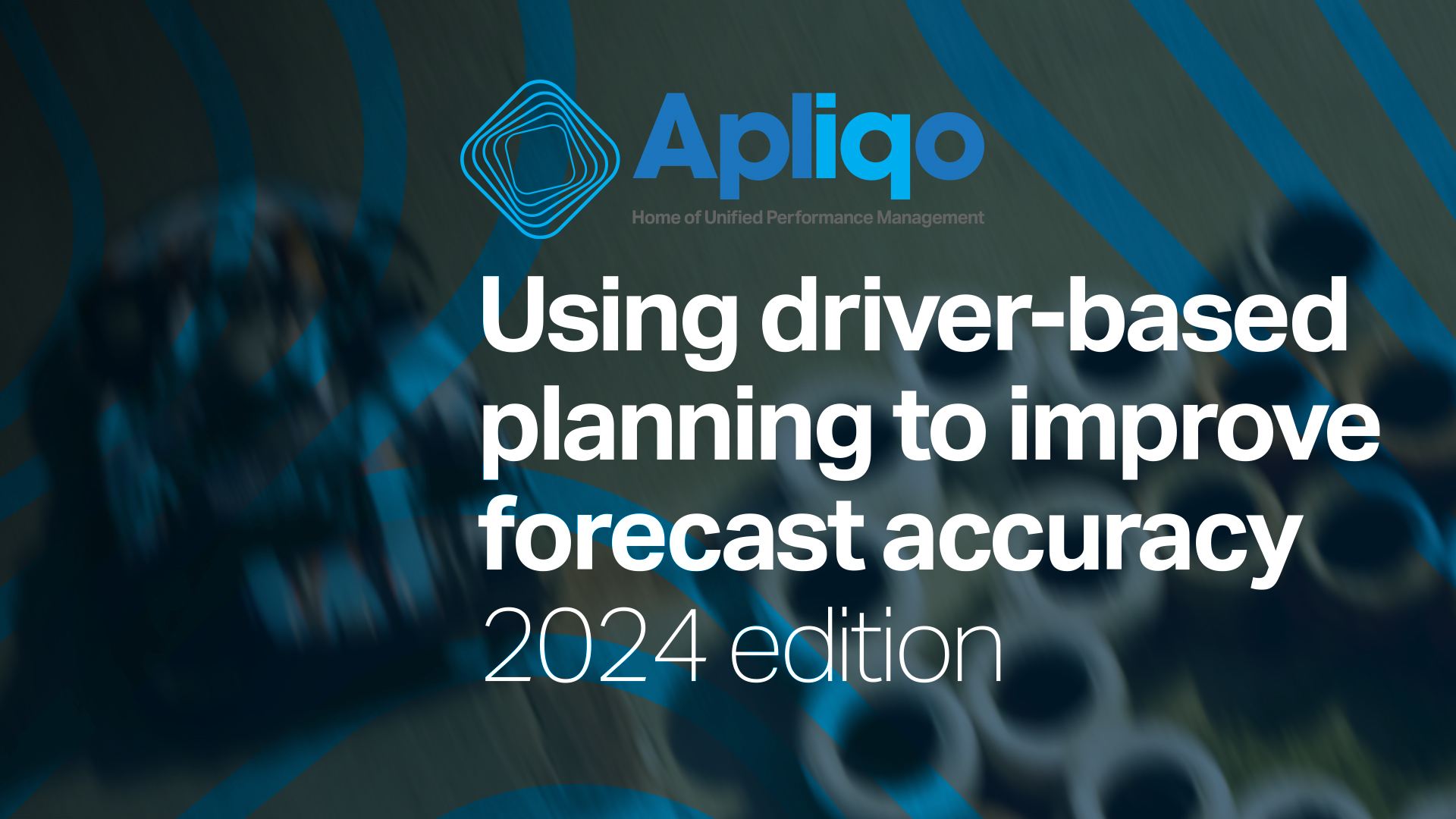Driver-based planning is far from a new concept, but it never ceases to amaze how many organisations are still stuck in traditional budgeting and forecasting routines.
In this article we take an in-depth look at driver-based planning and share some of our top tips to help you adopt this key methodology to get clearer insights into your company’s performance and make reliable, actionable plans for its future.
The problem with traditional budgeting and forecasting
“Traditional budgeting and forecasting processes are very much focused on data acquisition,” says Apliqo CEO Daniele Tedesco. In these traditional models, management typically spends most of its time collecting low-granularity information from different aspects of the company’s operations in hope of supporting more detailed (and thus more accurate) forecasts.
“In reality, however, it just ends up creating more clutter,” says Daniele. “That’s because the data-acquisition process only helps gather data and numbers. It doesn’t, however, provide any insight into what drives that data.”
Following the initial data acquisition, the next step in traditional budgeting and forecasting is a seemingly endless top-down vs. bottom-up battle between management and contributors.
“Management typically expects higher sales numbers to impress key stakeholders and create higher barriers for incentive schemes,” explains Daniele. Not only does this approach provide little reliable insight into actual company performance, but it’s also typically met with resistance from internal teams such as sales, who often feel encouraged to sandbag their numbers to ensure they hit their targets in the future.
It’s not hard to see the limitations of this traditional approach to budgeting and forecasting; it is far from transparent, very time consuming, and (in most cases) extremely frustrating. But arguably the biggest pitfall of traditional budgeting is that it drives absolutely no value.
“This process creates multiple planning cycles that have little relevance to the actual performance of the sales team,” says Daniele. Furthermore, this traditional approach to forecasting does very little to build an actionable, transparent plan for the company’s future and isn’t backed by driver-based data that aligns the rest of the organisation.
“Instead, traditional budgeting and forecasting is frustrating, time consuming, and ultimately does not help align the organisation to achieve its goals and take advantage of opportunities within the market,” says Daniele.
Driver-based planning: Transparent insights and a clear vision for the future
Whereas traditional budgeting and forecasting falls short in multiple areas, driver-based planning provides reliable insights into company performance and helps create the foundation for solid planning and analytics.
Whereas traditional forecasting is low granularity and tries to roundup as much data as possible regarding company finances and operations, driver-based planning focuses specifically on the key drivers of your business; that is, the numbers that most affect the company’s performance. “Driver-based planning focuses on factors that can be influenced by actions taken by an organisation and that are relevant and material,” says Daniele.
By taking a step back and focusing only on the areas of your business that directly affect your company’s performance, driver-based planning immediately helps reduce planning granularity, thus reducing the effort it takes to gather data and increasing the accuracy of your forecasts.
“Driver-based planning helps us hone in on the key drivers that affect our success in a particular market,” says Daniele. This could be an increasing customer base, increasing customer penetration, reducing customer churn, price-mix or whatever other sales-related drivers may be relevant to a specific industry.
When we focus on these drivers rather than a sea of data pulled in from all aspects of our company’s operations, we’re able to create plans that are not only easier to understand and execute, but that also markedly improve success and performance. “Plans are useless if they’re not put into action,“ says Daniele. “Driver-based planning allows us to align people with plans that make sense and can be dissected, understood, and put into action.”
But driver-based planning not only facilitates planning internally; it also makes it notably easier to communicate with stakeholders. “Plans based on backable data derived from the key drivers of a business offer a plain-language for communicating with company stakeholders and decision makers” says Daniele.
Tips to help your organisation adopt driver-based planning
1. Familiarise yourself with the company’s goals. There’s no point starting a plan if you’re not sure what to plan for. Make sure you’re clearly aligned with where the company wants to be heading in the future.
2. Identify your key drivers. Remember that you won’t be measuring the entire chart of accounts from your company. Pareto analysis (or the 80/20 rule) can come in very handy here. While every company and industry have unique drivers, some great places to start include financial drivers like unit price, volume, margins, and COGS, as well as operational drivers such as call volume, employee turnover, service level, and orders filled.
3. Build a driver-based financial model. Once you have identified your goals, the next step is to identify the key drivers of your business and industry and build a financial model to reach them. It is often a good idea to start a model with real numbers from a set period (say the last 12 months) before putting the variables to work to see what changes need to occur in order to move the organisation forward.
4. Read Daniele’s whitepaper on Advanced Financial Planning and join our FP&A Masterclass for more insight on driver-based planning and other key FP&A best practices.
At Apliqo, we strive to help CFOs and finance professionals drive real value for their organisations and inform better business decisions. For more information on the latest FP&A trends and best practices, make sure to follow our blog and sign up for our upcoming webinars/Masterclasses.







